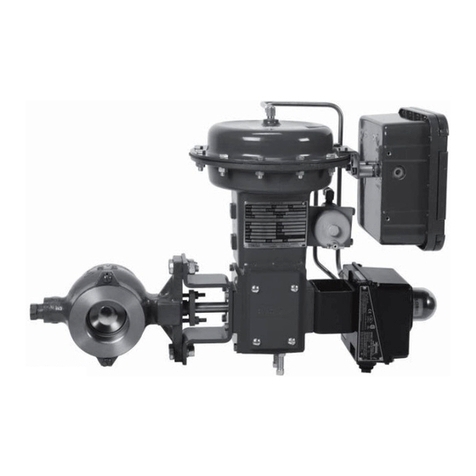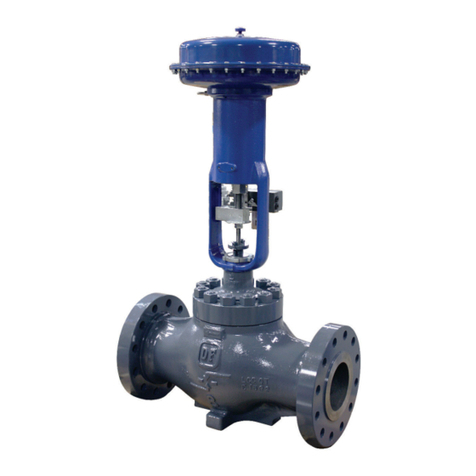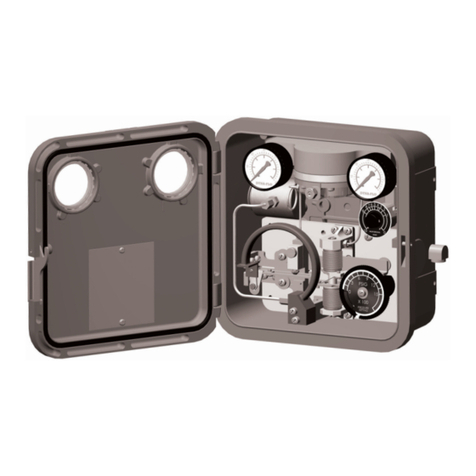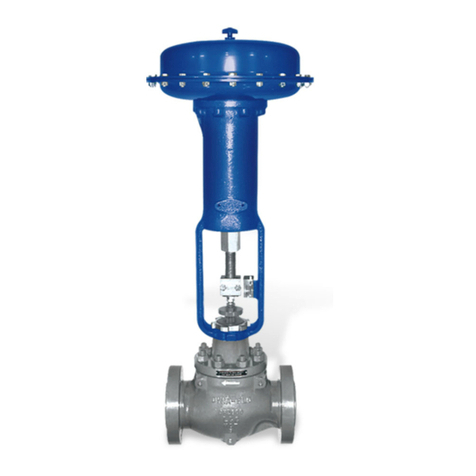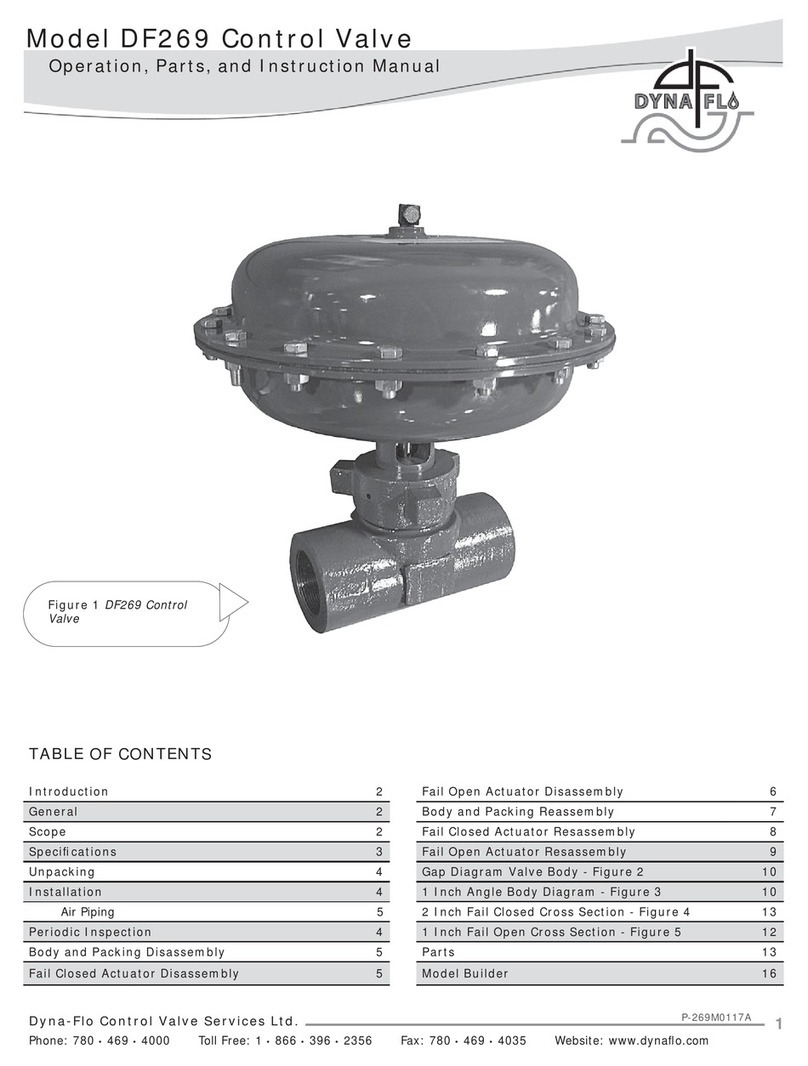
Dyna-Flo Control Valve Services Ltd.
Phone: 780 •469 •4000 Toll Free: 1 •866 •396 •2356 Fax: 780 •469 •4035 Website: www.dynaflo.com
Model 361 Control Valves
P-361S0615A 2
Operation, Parts, and Instruction Manual
Supplement
CAUTION
To avoid personal injury or installation damage as a
result of the sudden release of process pressure or
the breaking of parts, do not install the valve
assembly where service conditions could exceed the
limits stated in this manual or on the equipment
nameplates. Use government codes, accepted
industry standards and good piping practices to
select pressure-relieving equipment for protection of
your installation. It is also important to wear the
proper protective equipment when performing any
installation or maintenance activity.
Refer to the 360 Instruction Manual for the following information:
Unpacking Valve From Shipping Container (Page 4)
Installation (Page 4)
Periodic Inspection (Page 5)
Maintenance (Page 5)
Packing Maintenance (Page 6)
Lapping (Page 8)
VALVE DISASSEMBLY
Instructions concerning Valve Disassembly (Page 7 of P-360M)
will be the same for Model 361 valves except for Step 1 of Trim
Parts Removal (plug / seat / cage).
1Piston ring:
Piston rings (Key S1) will be broken in half, simply pull
apart the sections of piston ring and remove them. Proceed
to Step 2 of P-360M Trim Parts Removal instructions. Refer
to Figure 1 of this document.
Note: Model 361 valves have a one-piece metal seat ring
(Key 21).
VALVE ASSEMBLY
Instructions concerning Valve Assembly (Page 9 of P-360M)
will be the same for Model 361 valves except for Step 1 of Trim
Parts Assembly. Refer to Figure 1 of this document.
1For one-piece metal seat ring (Key 21) refer to the Lapping
section (Page 8 of P-360M) before assembling the valve.
After lapping has been completed, assembly as follows:
NOTE
Use an anti-seize compound that is approved for
the service conditions that the valve is being
installed into.
ACoat the seat ring gasket with anti-seize compound
and insert it into the seat pocket in the body.
BInsert a one-piece seat ring (Key 21) into the seat
pocket.
CInsert the cage (Key 18) into the body (Key 15).
DInstall piston rings (Key S1):
NOTE
Replacement piston rings come in one piece.
Before installation it is necessary to break the
piston ring into two pieces. Do not saw or cut
piston rings. Use extreme caution when breaking
piston rings as they can be easily damaged.
Vise Break (See Figure 2)
Piston rings can be broken into two pieces using a vise with
smooth jaws or softeners. Wrap electrical tape once around
the outside diameter of the piston ring to contain it while it
is being snapped in half. Place the unbroken piston ring
into the jaws of the vise so that they will compress the
ring into an oval. Slowly compress the piston ring until the
ring snaps on both sides, if one side snaps first, simply
keep compressing until the other side snaps.
Scoring (See Figure 2)
If no vise is present, wrap electrical tape once around the
outside diameter of the piston ring to contain it while it is
being snapped in half. score (don’t cut) the piston ring and
snap it over a hard surface (such as the edge of a work
bench or table.
Proceed to Step 2 of the Trim Parts Assembly section of
the 360 Instruction Manual (P-360M).
Table 1
Valve Shutoff Clasifications
Valve Model Shut Off Capability Port Diameter Inch (mm) Seal Rings
361 Class II Standard 1-5/16 - 8 (33 - 203) Standard with Single Graphite Piston Rings
Class III 3-7/16 (87) or larger Optional for Single Graphite Piston Rings
Class IV 4-3/8 (111) or larger Multiple Graphite Piston Rings

